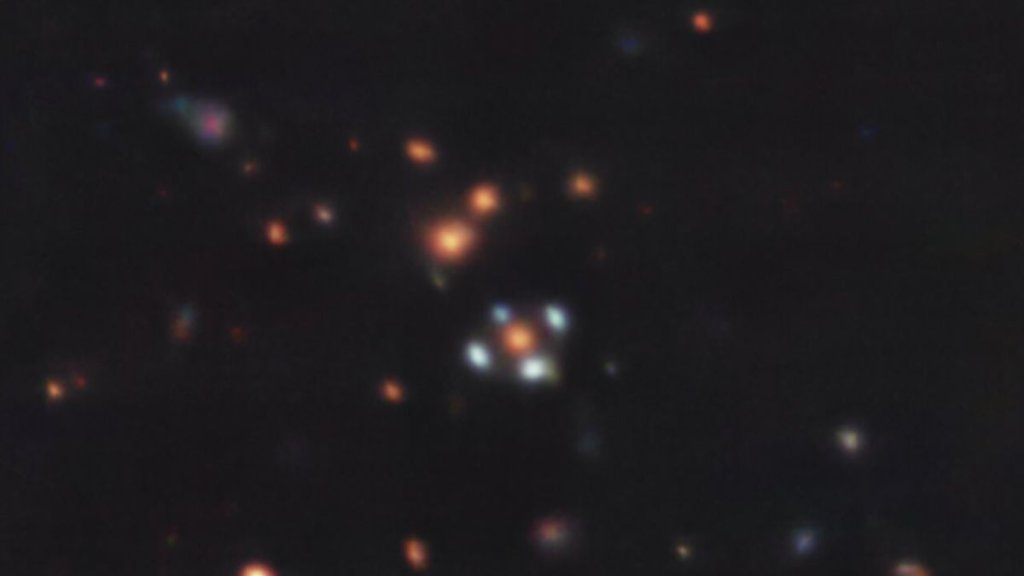
Einstein cross! Gravitationally lensed ‘flower’ spotted in deep space (photo) (Image Credit: Space.com)
A new image from the European Southern Observatory (ESO) captures a cosmic wildflower in space.
Using the ESO’s Very Large Telescope (VLT), astronomers photographed a distant galaxy surrounded by what appear to be four light-blue flower petals.
What’s really happening in this new image is the central galaxy is acting as a gravitational lens, bending and magnifying light from a hidden galaxy that lies behind it. This scenario causes us to see duplicate images of the background galaxy from our perspective on Earth, according to a statement from the ESO. These duplicate images create the ring of flower “petals” we see around the orange central galaxy.
Related: Amazing Space Views of ESO’s Very Large Telescope (Photos)
The effects of gravitational lensing allow us to see distant background objects that would otherwise be obscured by foreground objects along the same line of sight. In this case, the foreground galaxy has split the light from the background galaxy into four smudges of blue light.
“As a result, we see several images of the distant galaxy, distorted and magnified,” ESO officials said. “In the special configuration of these two galaxies, the hidden one appears as four images around the central ‘lens’ galaxy, forming a cross-like (or flower-like) pattern dubbed an Einstein Cross.”
The galaxies in the new photo are from the early universe and located in the Hercules constellation. The recent observations were captured using the Multi Unit Spectroscopic Explorer (MUSE) instrument on the ESO’s VLT, which is located in Chile.
The MUSE instrument splits the light coming from every point within the area being observed into a rainbow or spectrum. Observation data suggests the galaxy at the center of the flower appears red because it is largely composed of old stars, while the more distant galaxy is forming new stars at a rapid rate, appearing blue.
“Since light left the galaxy when the universe was about 20% of its current age, studying it provides clues about how galaxies formed in the early universe,” ESO officials said in the statement. “The expansion of the universe makes distant galaxies appear redder than if they were closer to us. That being said, the four images of the distant galaxy here look blue due to the presence of young stars.”
Their findings were published Aug. 8 in the The Astrophysical Journal Letters.





